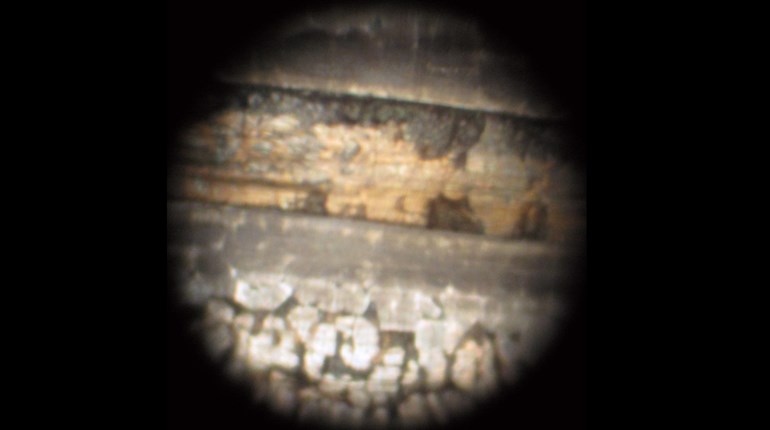
This article, "Steady As She Goes," appeared originally as "The Fix" in the August 2017 issue of Shooting Illustrated. To subscribe to the magazine, visit the NRA membership page here and select Shooting Illustrated as your member magazine.
The Problem:
After attending several different shooting schools hoping to improve your marksmanship and personal-defense skills, you are totally confused about the conflicting information recommended by the instructors as to the best techniques. Their advice on proper pistol-shooting stance had perhaps the greatest degree of variance, with each instructor having their own favorite method of what they considered best. You were taught Weaver, Isosceles, Field Interview and some slight modifications of foot-and-arm position of each in an effort to gain a tactical advantage. Unfortunately, out of all of the pistol-shooting stances you were taught, you never felt comfortable using any of them. You have to wonder what’s the advantage of one stance over another if you don’t feel comfortable and/or balanced when you need to most.
The Solution:
Among other things, proper pistol-shooting stance is a means of maximizing muzzle stability on the target, particularly if there is no additional support available. Unfortunately, some firearms instructors preach what works for them in certain applications of teaching the “textbook” definition of stance—without defining the application of how it should work for you in particular situations.
It needs to be understood that the definition of proper stance (when it is applied to shooting) is not a one-size-fits-all application.
Across the course of high-power rifle shooting, while competing in the “standing” portion of the national match course, the three things considered the most relevant to proper shooting stance are muscle relaxation, bone support and natural point-of-aim. Muscle relaxation allows the shooter’s skeleton (bone support) to support the weight of the body and the rifle, without relying on muscle tension to achieve a stable position. Natural point-of-aim is realized from this condition by moving one’s foot position until the rifle is pointing at the middle of the target without the benefit of muscle tension to keep it there. This results in the shooter’s center of gravity, relative to the foot position, providing balance which, without muscle tension, optimizes the stability of the muzzle in relation to the target. Consistently applying this concept, along with proper use of the sights and manipulation of the trigger, maximizes the performance of the shooter and the equipment.
One point that isn’t often talked about or even fully understood about natural point-of aim is it can (and often will) change slightly as the body settles during the shooting process. This necessitates slight changes in foot position to keep the muzzle stabilized and pointed at the center of the target without relying on muscle tension to hold the position.
The precision pistol disciplines (often referred to as bullseye pistol shooting) follows much the same theme as rifle shooters with an emphasis on natural point-of-aim. There are three recommended starting points in achieving a proper pistol-shooting stance in this discipline. The straight-on in which the shooter faces the target, the bladed, in which the shooter stands at approximately a 45-degree angle to the target and the open stance in which the shooter’s body is perpendicular to the target. I’ve seen Master Class shooters use these and modified versions thereof, including one in which the shooter was facing at a slight angle away from the target. In each case, the shooter found what position afforded the optimum muzzle stability on the target for their body type and their physical size.
If you have a chance to observe a top shooter on a clays course for shotguns, you will find slight-to-significant variations in their body and foot position at the shooting station, depending on the shot presentation they are about to undertake. The reason for this is to optimize the muzzle position of the shotgun relative to the break point of the target during the swing. This allows the muzzle to stabilize long enough, relative to the target, for the shot charge to break the target. The common theme to all of these different disciplines is stabilizing the muzzle on or relative to the target in order to minimize error in hitting the target in the center.
When considering personal-defense training, the concepts of muscle relaxation and natural point-of-aim really aren’t realistic and neither are static pistol-shooting stances that require specific foot and body position to be judged as being “correct.” The objective in this case is to stabilize the muzzle on the target, that is to hold the muzzle as still as you can under the current conditions and execute a manipulation of the trigger as many times as necessary with as little affect on the stability of the muzzle as possible. The requirement here may need to be performed while moving, while behind cover or in an improvised position with either or both hands, in addition to a list of variables as the situation unfolds.
Think in terms of balance—any position that aids in minimizing unintentional movement; mobility—a position that allows a location change in any of the 360 degrees on demand; and stability—allowing the muzzle of the gun to be held on the target through the discharge of an accurate shot(s). These factors combine to offer a working definition of proper pistol-shooting stance for personal defense.
In the future, look for instructors who will teach by showing “a way” to do something rather than “the way” of achieving success, as well as being open minded enough to helping you find what works best for you.
Learning to shoot from a proper pistol-shooting stance is a starting point to assist in stabilizing the muzzle on the target for personal defense. Learning to hit your target in less-than-ideal conditions will take you farther down the road you intend to travel, however.



































